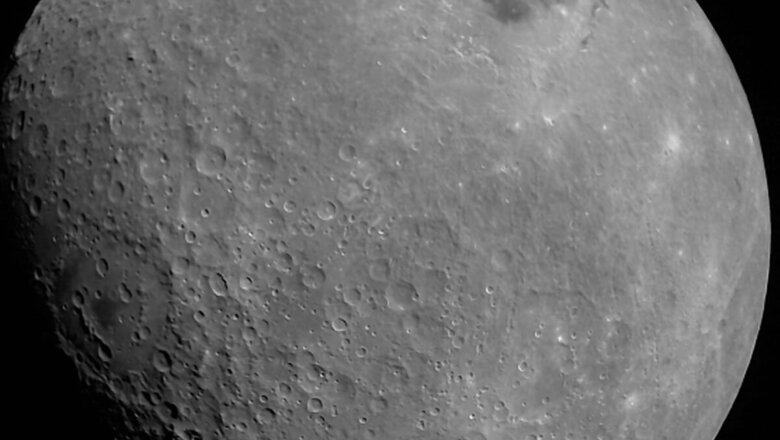
views
Chandrayaan-2, India’s pioneering mission to the moon, celebrated its one year anniversary of entering the lunar orbit. On August 20, 2019, Chandrayaan-2’s lunar orbiter module, along with the now-crashed Vikram lander, entered the lunar orbit, and a day later, sent over its first photograph of the crater-ridden surface of the moon captured by the L14 camera on board Vikram. While Vikram’s fate has not gone exactly as per plan, Chandrayaan-2 will forever be hailed as a success. After India’s first approach to the lunar orbit with Chandrayaan-1, its second lunar mission will be remembered for attempting what no other lunar mission had until date – landing on the distant, frigid South Pole of the moon. Incidentally, it is this that set the mission apart.
The objective of the Chandrayaan-2 mission was to land at the southern-most tip of the moon. The reason why this set the mission apart is multi-fold. For one, the South Pole of the moon remains a largely uncharted territory because of the extreme conditions at this part of the satellite. It witnesses fortnight-long nights, during which it receives no light from the Sun – something that is critical to having space probes remain functional by drawing energy to power its instruments. The southernmost tip of the moon is also ridden with massive craters, the insides of which reportedly host extreme temperatures that go down to as low as minus 274 degrees Fahrenheit (-170 degrees Celsius).
These conditions are believed to be extreme traps for gases and other vital elements that may have been trapped in the extreme corners of the craters. Coupled with the lack of sunlight for prolonged periods, the corners of these craters are believed to have trapped gases that may hold the key to understanding the moon’s past – how it got bombarded with asteroids, what its older constituency may have been, and even route back to its years of origin. Furthermore, these gases are believed to hold key to understanding whether the moon may have ever sustained life on its surface, and also understand whether life can ever be hosted on the moon’s surface.
The reason why Chandrayaan-2 stands out is because of attempting to send back to Earth completely new data sets that could have taken space research forward significantly. Even with the Vikram lander failing to land on the moon’s surface as per plan, Chandrayaan-2 continues to send back to Earth valuable data sets to better understand the behaviours of the lunar surface, and data from the Vikram lander’s failed soft landing will further help both ISRO and other cooperating space agencies around the world rectify errors for such landing manoeuvres in future.
Not taking into account Chandrayaan-2’s fractional cost in comparison to other space missions by other nations, the mission was set apart by its fully indigenous approach, one that has almost been a 100 percent success all through. Given the unknown nature of space, our final frontier, it is a rarity for space missions to go through with 100 percent accuracy and success in terms of its mission objectives. While we did lose the lander to unforeseen circumstances, Chandrayaan-2’s orbital module continues to observe the lunar surface with multiple scientific instruments on-board, and as per ISRO, has enough fuel to continue doing so for seven more years of service.

















Comments
0 comment